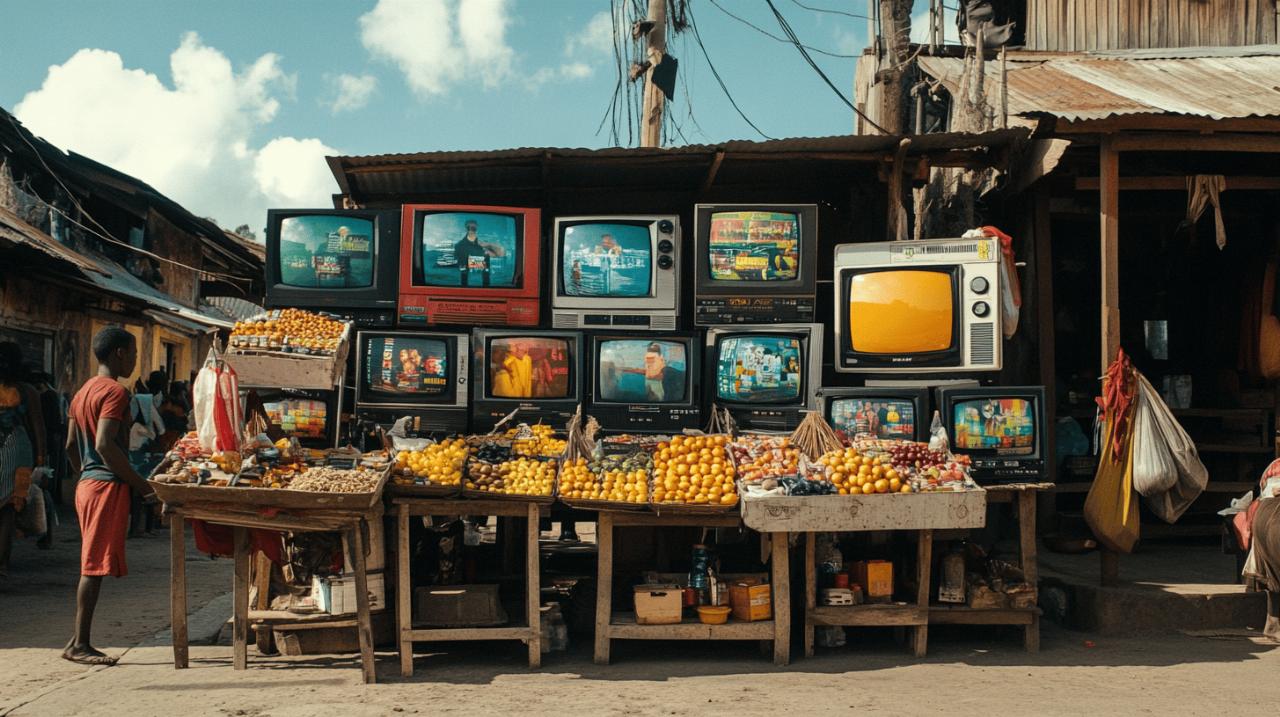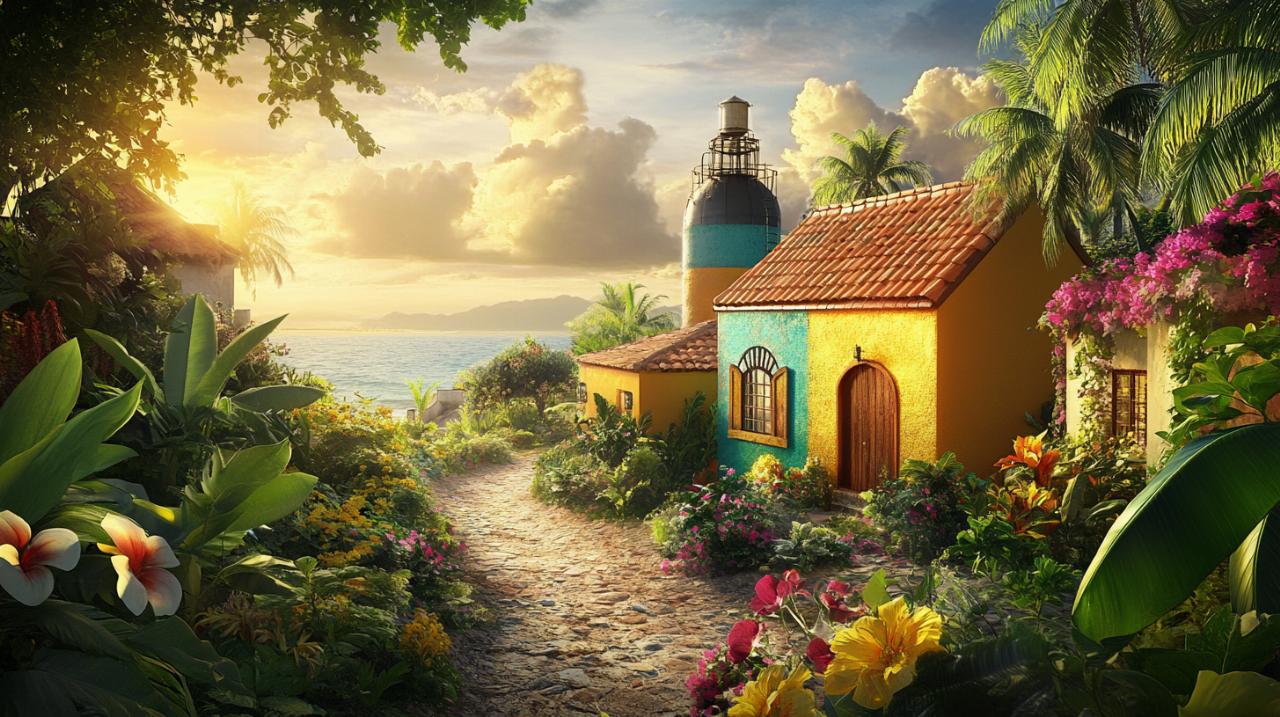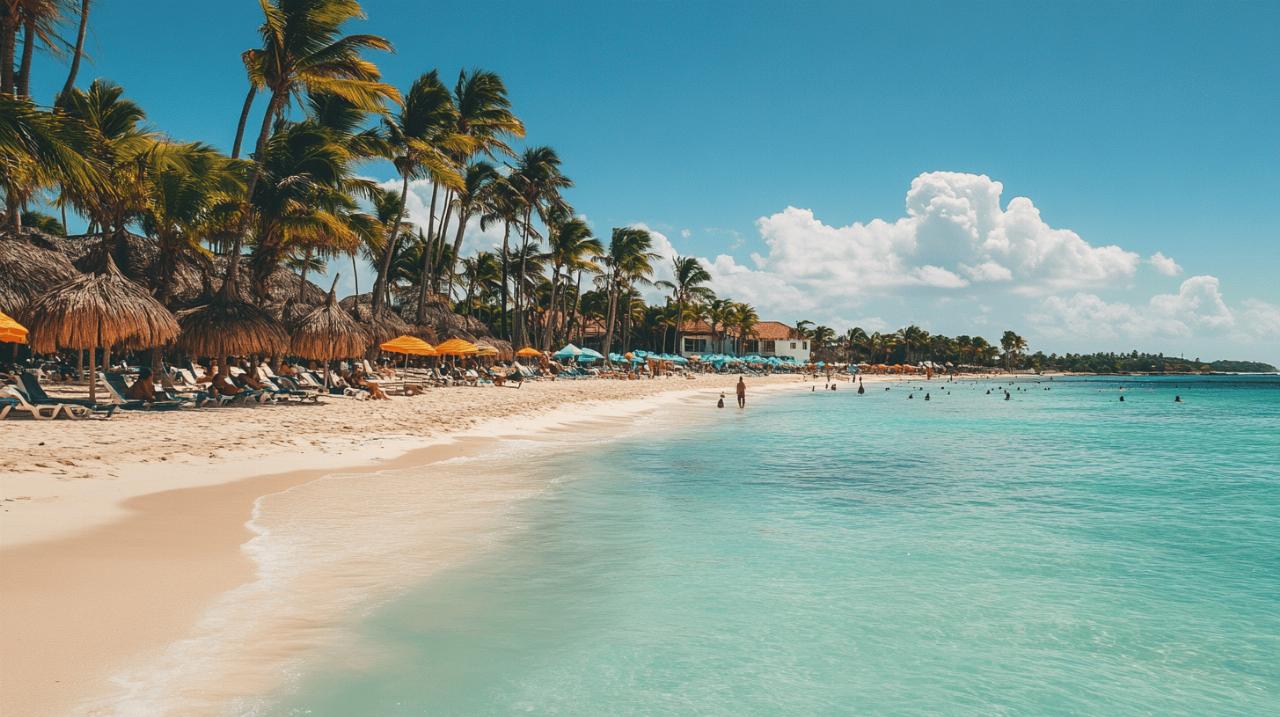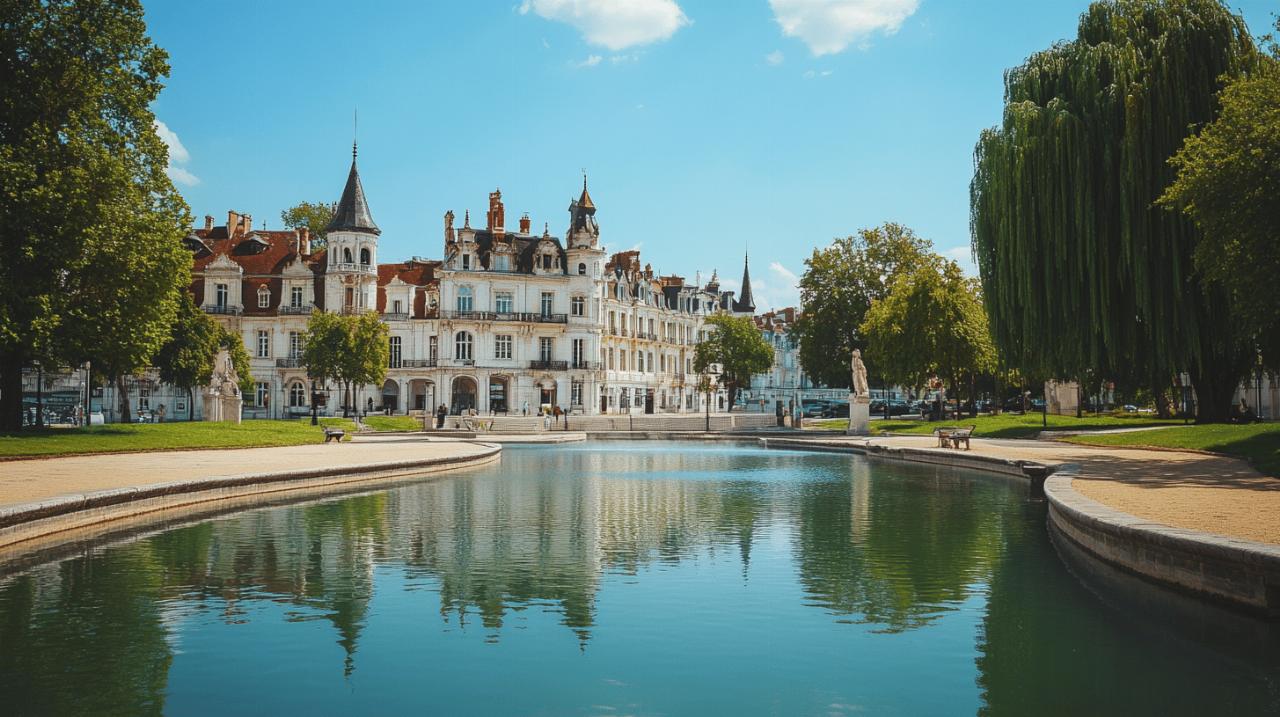Madagascar's television landscape offers a fascinating blend of local and international programming, with a particular richness in culinary content that reflects the island's diverse gastronomic heritage. The various channels broadcasting across the nation provide viewers with everything from traditional Malagasy cookery demonstrations to French-inspired culinary shows, creating a vibrant media environment that celebrates food culture. As the nation continues to expand its broadcasting infrastructure, audiences from coastal Toamasina to the bustling streets of Mahajanga can enjoy an ever-growing selection of programmes dedicated to the art of cooking and the stories behind the island's unique cuisine.
Understanding the Madagascan Broadcasting Landscape and Its Culinary Content
The Role of TVM and State Broadcasting in Promoting Malagasy Cuisine
Televiziona Malagasy, commonly known as TVM, serves as the cornerstone of the nation's broadcasting network and plays a pivotal role in showcasing the culinary traditions of Madagascar. As the state broadcaster, TVM reaches audiences across the entire island, transmitting programmes that highlight regional dishes, traditional cooking methods, and the cultural significance of Malagasy gastronomy. The channel's commitment to promoting local cuisine extends beyond simple recipe demonstrations, encompassing documentaries about spice cultivation in the highlands, fishing traditions along the coast, and the preparation of dishes that have been passed down through generations. This nationale channel ensures that even viewers in remote provinces can access content that celebrates their culinary heritage whilst also introducing them to cooking styles from other regions of the isle.
The state broadcaster's influence extends to educational programming that teaches viewers about nutrition, sustainable food practices, and the preservation of traditional cooking techniques. TVM's culinary programmes often feature local chefs and home cooks who share their expertise, creating a sense of community and cultural continuity. The channel broadcasts in both Malagasy and French, ensuring accessibility for the diverse linguistic landscape of the country. Through its comprehensive coverage across different reseaux and localites, TVM has become an essential platform for food enthusiasts who wish to deepen their understanding of Madagascan cuisine whilst remaining connected to their cultural roots.
How Local and French Channels Cater to Food Enthusiasts Across the Isle
Beyond the national broadcaster, a variety of local and French channels contribute to the rich tapestry of culinary programming available to Madagascan viewers. Viva TV, one of the prominent chaines operating across the island, offers a diverse mix of entertainment that includes cooking shows featuring both traditional and contemporary approaches to Malagasy cuisine. These channels broadcast across multiple localites, from the bustling port city of Toamasina to the historic trading hub of Mahajanga, ensuring that food programming reaches audiences in urban centres and rural communities alike. The availability of French francaises channels through various box and internet offerings has further enriched the viewing experience, allowing Malagasy households to access international culinary content that inspires new cooking techniques and fusion recipes.
The integration of French programming into the Madagascan media landscape reflects the historical and cultural ties between the two nations, with French-language cooking shows providing viewers with exposure to European culinary traditions whilst complementing local content. Many households now access these international chaines through modern internet offre packages, which bundle television services with online streaming capabilities. This technological advancement has democratised access to diverse culinary content, enabling viewers across the totalite of the province to enjoy everything from classic French patisserie demonstrations to contemporary fusion cooking that blends Malagasy ingredients with international techniques. The variety of channels available ensures that whether one's interest lies in traditional recipes or innovative culinary experiments, there is ample programming to satisfy every food enthusiast's appetite for knowledge and entertainment.
Popular Cooking Programmes and Food Shows on Madagascan Television
Traditional Malagasy Cookery Programmes on Viva TV and Regional Channels
Viva TV has established itself as a champion of traditional Malagasy cookery, offering programmes that delve deep into the preparation of iconic dishes such as romazava, a hearty meat and greens stew, and ravitoto, a dish made from cassava leaves. These shows typically feature experienced cooks who demonstrate the step-by-step process of creating these beloved meals, often incorporating ingredients sourced from local markets and explaining the cultural significance of each component. Regional channels complement this content by focusing on area-specific culinary traditions, showcasing the diverse food cultures that exist across Madagascar's different provinces. From the seafood specialties of coastal regions to the rice-based dishes of the highlands, these programmes celebrate the incredible variety of cooking styles found across the isle.
The appeal of these traditional cookery programmes lies not only in their instructional value but also in their ability to preserve and transmit cultural knowledge. Many shows feature elder cooks sharing recipes that have been in their families for generations, creating a living archive of Malagasy culinary heritage. These programmes often film in authentic settings, from village kitchens to outdoor cooking areas, providing viewers with an immersive experience that goes beyond mere recipe recitation. The regional channels that emettent these programmes across different reseaux ensure that local food traditions receive the recognition they deserve whilst also introducing viewers from other parts of the country to the culinary diversity that makes Madagascar's food culture so rich and varied.
French Culinary Influences: Accessing International Food Content via Box and Internet Offerings
The influence of French culinary traditions on Madagascan television programming is substantial, with many viewers accessing content through modern box and internet services that bring international cooking shows directly into their homes. These services offer a curated selection of French-language programmes featuring renowned chefs, baking competitions, and travel-based food documentaries that explore culinary destinations around the world. The availability of such content has inspired a new generation of Malagasy cooks to experiment with techniques and ingredients beyond their traditional repertoire, leading to exciting fusion cuisine that respects local traditions whilst embracing global influences. Viewers can now watch everything from classic French cooking instruction to contemporary gastronomy shows that push the boundaries of culinary creativity.
Access to these international programmes typically requires a subscription to an internet offre that includes television services, though some content may also be available through streaming platforms that require a VPN for optimal access. The liste of available channels continues to expand as broadcasting technology improves across Madagascar, with providers increasingly offering packages that combine local and international content to appeal to diverse viewing preferences. This blend of programming ensures that food enthusiasts can enjoy traditional Malagasy cookery shows alongside French patisserie tutorials, Italian pasta-making demonstrations, and Asian culinary documentaries. The cross-cultural exchange facilitated by these international channels enriches the Madagascan culinary landscape, encouraging innovation whilst maintaining respect for the island's rich food heritage.
Accessing Television Channels: Infrastructure and Broadcasting Networks in Madagascar
UHF Broadcasting and Coverage Across Provinces from Toamasina to Mahajanga
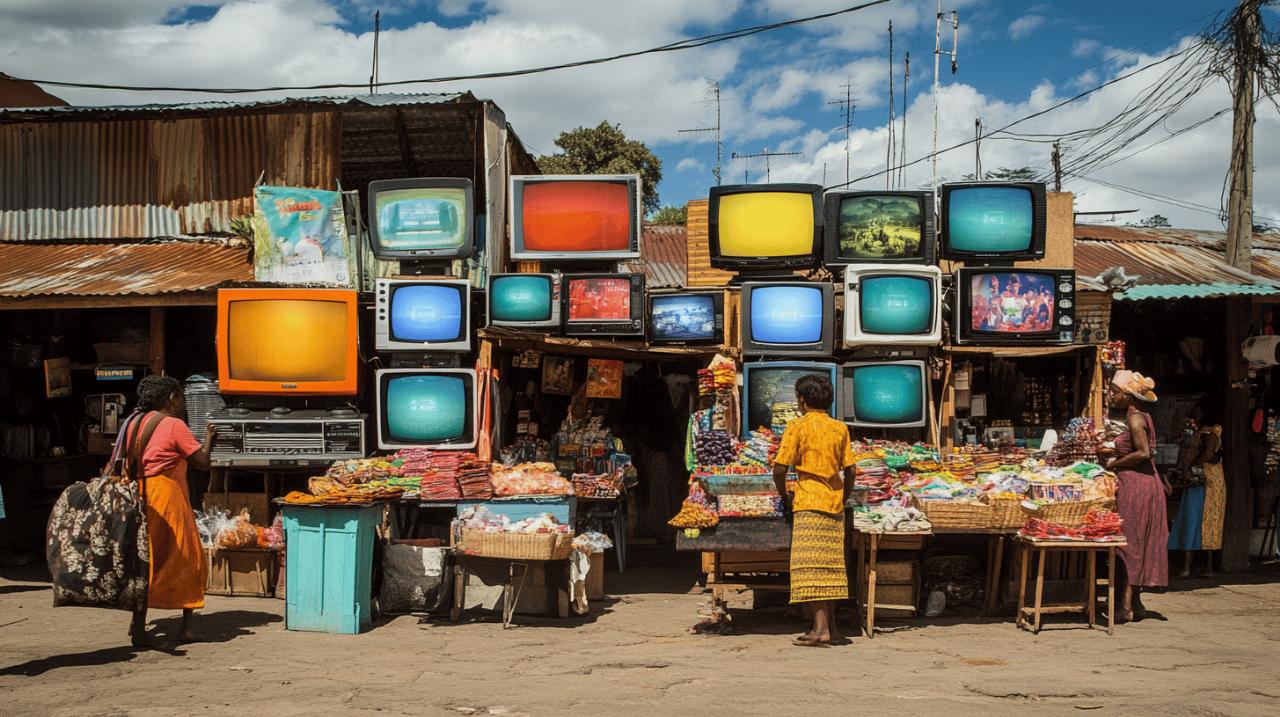 The broadcasting infrastructure in Madagascar relies heavily on UHF transmission systems that enable channels to reach audiences across the country's diverse geography. From the eastern port city of Toamasina to the western coastal hub of Mahajanga, UHF broadcasting networks ensure that viewers in different provinces can access the same culinary programming, creating a shared national experience around food culture. The radiodiffusion authorities oversee these reseaux, working to expand coverage to remote areas where access to television services has historically been limited. This expansion has been crucial in ensuring that cooking programmes and food-related content reach audiences in rural localites, where traditional culinary practices remain strongest and where the preservation of food heritage is most critical.
The broadcasting infrastructure in Madagascar relies heavily on UHF transmission systems that enable channels to reach audiences across the country's diverse geography. From the eastern port city of Toamasina to the western coastal hub of Mahajanga, UHF broadcasting networks ensure that viewers in different provinces can access the same culinary programming, creating a shared national experience around food culture. The radiodiffusion authorities oversee these reseaux, working to expand coverage to remote areas where access to television services has historically been limited. This expansion has been crucial in ensuring that cooking programmes and food-related content reach audiences in rural localites, where traditional culinary practices remain strongest and where the preservation of food heritage is most critical.
The technical specifications of UHF broadcasting allow for reliable signal transmission across varied terrain, from coastal lowlands to mountainous highlands, though challenges remain in achieving complete coverage across the totalite of the nation. Investment in broadcasting infrastructure continues to improve access, with new transmission towers and signal boosters extending the reach of both state and private chaines. This improved coverage benefits culinary programming specifically, as it allows regional food shows to achieve broader audiences whilst also enabling national cooking programmes to reach viewers who might previously have been excluded due to geographical limitations. The ongoing development of broadcasting networks represents a commitment to media diversity and cultural preservation, ensuring that all Malagasy citizens can participate in the nation's vibrant food culture through television programming.
Internet and VPN Solutions for Viewing International Culinary Content
As internet penetration increases across Madagascar, many viewers are turning to online platforms to access culinary content from around the world, with some international services requiring VPN solutions for optimal access. These internet-based viewing options complement traditional broadcast channels, offering on-demand access to cooking programmes, food documentaries, and culinary competition shows from various countries. The flexibility of internet streaming allows viewers to watch content at their convenience, pausing and revisiting recipes as needed, which is particularly valuable for those learning new cooking techniques. Many households now combine traditional television subscriptions with internet streaming services, creating a comprehensive viewing experience that encompasses both local Malagasy programming and international culinary content.
The use of VPN services has become increasingly common among Madagascan viewers who wish to access geographically restricted content, including streaming platforms that feature extensive libraries of cooking shows and food documentaries. Whilst local channels provide excellent coverage of Malagasy and French culinary programming, international platforms offer exposure to cuisines and cooking styles from across the globe, from British baking shows to Japanese culinary documentaries. This global access enriches the viewing experience and provides inspiration for Malagasy cooks who wish to experiment with international recipes whilst maintaining the foundation of their traditional cooking knowledge. The combination of robust local broadcasting through UHF reseaux and expanding internet access creates a dynamic media environment where food enthusiasts can explore both their cultural heritage and global culinary trends.
The Future of Food Broadcasting and Media Diversity in Madagascar
The Growing Influence of Radio and Television in Promoting Local Gastronomy
The combined influence of radio and television in Madagascar has created unprecedented opportunities for promoting local gastronomy and preserving culinary traditions. Radio programmes dedicated to food culture often feature discussions with chefs, farmers, and food historians, providing context and storytelling that complements the visual demonstrations offered by television. Together, these media platforms create a comprehensive ecosystem for food content that engages audiences through multiple sensory channels. The radiodiffusion sector continues to evolve, with broadcasters recognising the strong public interest in culinary programming and responding with increased investment in food-related content production. This trend suggests a bright future for gastronomy-focused broadcasting across the isle.
Television's visual medium proves particularly effective for cooking instruction, allowing viewers to observe techniques, ingredient preparation, and plating styles in detail. As production quality improves and more resources are allocated to culinary programming, Madagascan televisions are likely to feature increasingly sophisticated food shows that can compete with international productions in terms of presentation and educational value. The involvement of professional chefs, food writers, and cultural commentators in these programmes elevates the discourse around Malagasy cuisine, positioning it not merely as sustenance but as an art form worthy of serious study and celebration. This elevation of food culture through broadcasting contributes to national pride whilst also attracting international interest in Madagascar's unique culinary heritage.
Opportunities for Culinary Programming Across Diverse Localities and Networks
The future of culinary broadcasting in Madagascar holds exciting possibilities as new technologies and expanded networks create opportunities for more diverse and localised food programming. As broadcasting infrastructure continues to develop across different localities, there is potential for hyper-local cooking shows that highlight village-specific dishes and micro-regional culinary traditions that might otherwise be overlooked in national programming. These localised programmes could be produced at relatively low cost using modern digital equipment, then distributed through both traditional UHF reseaux and internet platforms, ensuring maximum reach regardless of geographical location. Such initiatives would preserve endangered culinary knowledge whilst also providing employment opportunities for local food experts and media professionals.
The expansion of international partnerships presents another avenue for growth, with potential collaborations between Madagascan broadcasters and foreign networks leading to co-productions that showcase the island's cuisine to global audiences. These partnerships could facilitate knowledge exchange, technical training, and resource sharing that elevates the quality of local culinary programming whilst maintaining authentic Malagasy perspectives. As the liste of available chaines continues to grow and audiences become increasingly sophisticated in their viewing preferences, broadcasters will need to innovate continuously, creating content that educates, entertains, and celebrates the rich food culture of Madagascar. The convergence of traditional broadcasting, internet streaming, and social media platforms creates a dynamic environment where culinary content can thrive, ensuring that future generations remain connected to their gastronomic heritage whilst embracing new culinary possibilities.

